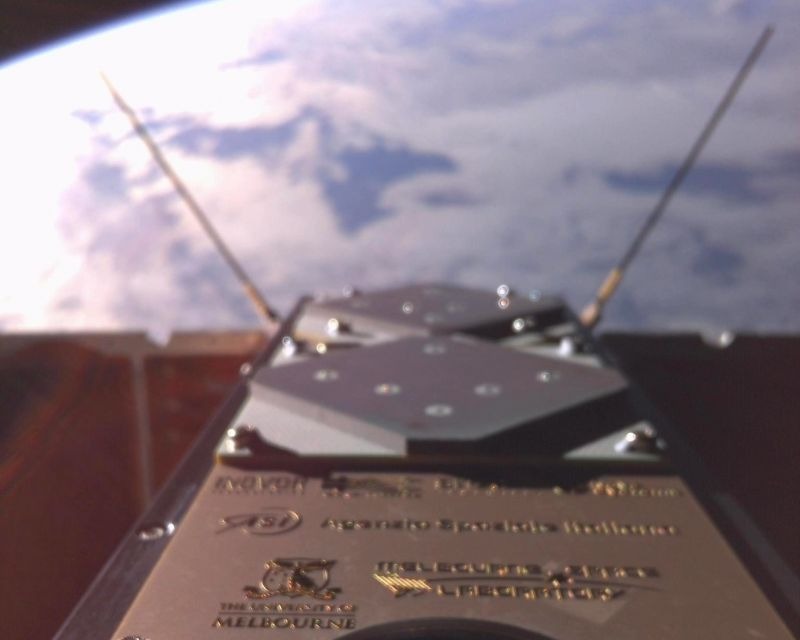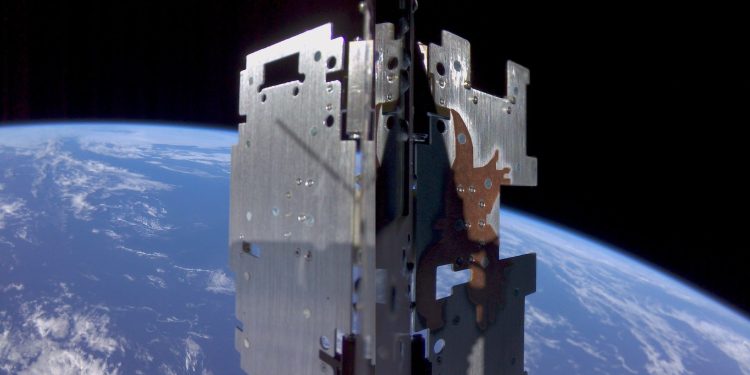Australia’s SpIRIT nanosatellite has taken its first ‘selfie’ from space, marking the successful start of its mission.
SpIRIT – formerly known as the Space Industry Responsive Intelligent Thermal Nanosatellite – is the first Australian Space Agency-funded space telescope to carry a foreign space agency’s science instrument as its primary payload.
Launched in December 2023 aboard a SpaceX Falcon 9 rocket, SpIRIT has now completed its commissioning phase, testing all of its onboard systems, including its winged thermal management and deployable camera arm, which it used to take a “selfie” in space.
Recent images shared by the University of Melbourne show the satellite in orbit, confirming that its systems have been deployed and functioning properly. The images include snapshots of the satellite’s thermal radiator, electric propulsion thruster payload, telecommunications transceivers and solar panels, which showcase the innovative technologies developed for the mission, according to a declaration of the university.
“SpIRIT is a complex satellite designed and built in Australiawith many components flying for the first time and hosting a scientific instrument provided by the Italian Space Agency (ASI),” Michele Trenti, principal investigator and professor at the University of Melbourne, who is leading the mission in collaboration with ASI, said in the release. “Now that SpIRIT has completed rigorous testing in space, we are confident that it is ready to begin the next phase of its mission, which is truly fascinating.”
SpIRIT spent more than 600 days in orbit, during which it circled Earth more than 9,000 times, covering a distance comparable to a round trip between our planet and March.

Once this first phase is completed, SpIRIT embarks on its main scientific role: detecting gamma-ray bursts (GRB). Thanks to the HERMES X-ray detector prototype provided by ASI, the satellite will search for signs of these cosmic explosions, which are generally unpredictable and difficult to spotresulting from stellar collisions or supernovas. SpIRIT will therefore act as an early warning system allowing astronomers around the world to further their research.
“The SpIRIT mission demonstrated the capabilities that exist within the Australian space sector – from building the satellite and testing new technologies in orbit and on the ground, to hosting international science payloads and successfully completing its initial phase,” Australian Space Agency Director Enrico Palermo said in the release.
SpIRIT has already shown its first successes in detecting Crab gamma pulsar after only 700 seconds of observation. It still has a long mission ahead, with more than 1,000 days expected in orbit.









